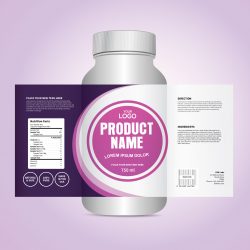Why pharma firms would benefit from a modular approach to working with product labelling
Posted: 30 July 2020 | David Bennett (Kallik) | No comments yet
According to David Bennett, securing and building trust in the label, brand and process of a highly regulated industry player in a complex age will demand a new approach.


In the pharmaceutical field, label change management is a notoriously complex affair. Labelling is made challenging because physical labels tend to be handled by regulatory teams and manufacturers, while the artwork is managed by design teams, commonly at third-party agencies.
None of this is well co-ordinated and it can be difficult to see the current status of output, the likely impact of planned changes and what will be involved to roll out alterations wherever they are needed.
In their bid to comply more readily and effectively with ever-evolving safety and quality standards from the European Medicines Agency’s (EMA) implementation of ISO IDMP to new US Food and Drug Administration (FDA) Pharm Quality/CMC specifications, an emerging consensus among pharma is that a modular approach to content creation and change could be the best strategy for the industry to manage effective labelling changes across the product lifecycle.
A deep disconnect


As the pharmaceutical industry continues to wrestle with regulatory compliance, companies have typically failed to globalise processes because of their inherently disconnected nature. This has been due to the regional or country-specific makeup of individual regulatory requirements, allied to the dispersal of product information across different teams and systems across the organisation.
While some of the necessary information will exist in the corporate core data sheet, which belongs to the regulatory department and is used in information management, a lot more will be stored in various information silos. This tends to reside in the company’s enterprise resource planning (ERP) system (effectively a production/supply chain silo), the laboratory information management system (LIMS) and as the ultimate signatory for labelling content is typically country-based, within a regulatory system.
This fragmentation and absence of a ‘single source of labelling truth’ within the global organisation has made it difficult for pharmaceutical brands to manage the integrity of labelling on a broad scale. It has also hampered any meaningful progress for automation around global labelling management. In turn, this has contributed to the complexities, cost and risk that so many international pharmaceutical organisations still experience as they try to absorb each updated set of regulatory requirements around safety messaging, product transparency and so on. Changes to company branding, product substances or manufacturing processes also necessitate a label edit.
Medical device industry best practice
An inherent adherence to engineering principles in medical device manufacture means that labelling is treated as a factory line process involving known modular content elements, rather than a process-based industry working with less tangible formulations from the laboratory. This is different to pharmaceutical organisations, who are still drawing from single-use documents, manually copying and pasting content into designated label formats.In sharp contrast – and as an example of the modular tactic to commercial content – it is worth examining the medical device industry.
…label change management is a notoriously complex affair”
From the carton and instructions for use (IFU) to the packing box with its own barcode, all elements are part of the same process in medical device manufacture and everything is managed systematically and efficiently. Furthermore, as the medical device industry arrived relatively late to the level of regulatory rigour demanded by other disciplines, especially life sciences, it has not been encumbered with the same legacy of content silos experienced in other sectors. The reason is that medical device manufacture is a discrete, engineering-based industry, using assembly line finished products from pre-built and vetted components, rather than a process-based industry working with less tangible formulations put together in remote centres.
A write-once/read-many approach
Regulator expectations and controls over what needs to be declared and how are becoming tougher, while the growing occurrence with which modifications need to be made to statements and patient IFUs is escalating the challenge facing pharma firms, including their quality and safety teams as well as design, manufacturing and distribution operations. The ideal situation is a write-once/read-many approach – where approved master content becomes the decisive source of everything that follows and where vital content component editing occurs.


Agility and real-time responsiveness
For too long in pharma, labelling has been forgotten or at best not prioritised, lumped with promotional materials and advertising rather than considered critical to continued marketing authorisation, brand perception, market confidence and patient safety.
However, in the light of intensifying legislation and governance and continuously evolving data-centric safety and quality standards, it is only going to be a systematic modular approach that will give life science companies the agility and real-time responsiveness that, so far, they have only aspired to deploy.
About the author
David Bennett has 30 years of experience working in the international software, life sciences and healthcare leadership sectors. His career spans the breadth of the pharma value chain – from early discovery through development to commercial. David headed up Documentum’s operations in Europe for six years and most recently he was VP of Strategy at Veeva Systems Europe. His current position is the Chief Commercial Officer at Kallik.
Related topics
Related organisations
European Medicines Agency (EMA), US Food and Drug Administration (FDA)









